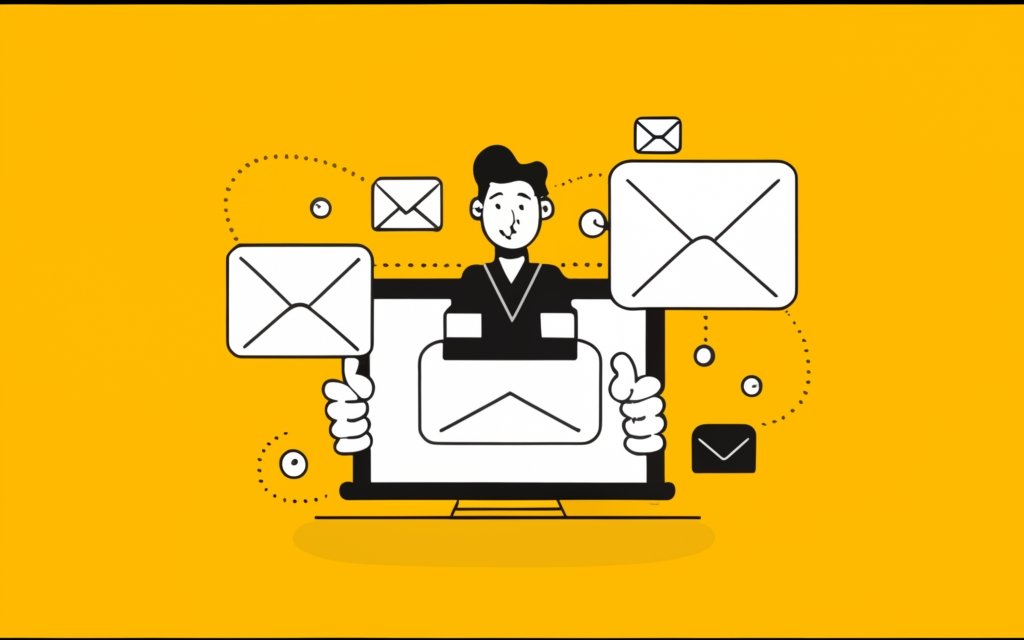Email marketing is a powerful way to connect with people with many marketers using email every day, but it’s also easy to get wrong.
You need to make sure you’re creating and sending emails the right way. But with so many aspects to keep in mind — subject lines, email copy, images, layouts, and more — it can be tough to know where to get started.
To help you get your email marketing on the right track, I’ve compiled a list of 11 email mistakes you might be making. Check it out, and if you’re making any of these mistakes, correct them — your email marketing results will improve if you do.
1. Not having a clear goal for your email marketing campaigns
Every email you send should have a clear goal, and you should be able to articulate what that goal is in one sentence.
In this example from Fabletics, the goal of the email is to get subscribers to take the quiz, which will then help the company to provide personalized recommendations.
By focusing on one goal, you can create a clear and concise message that makes it easy for your subscribers to know what you want them to do.
2. Sending emails to the wrong people
Sending irrelevant emails to your list can make your customers feel like you don’t understand them or value their time.
Segmenting your email list based on customer data, such as purchase history or location, is a great way to make sure you’re sending the right emails to the right people.
You can also use tags to segment your email list based on customer behavior. For example, you could tag customers who have opened your emails in the past, and then send a special offer to that segment of your list.
This can help you increase your open and click-through rates, and improve your overall email marketing performance.
3. Not personalizing your email marketing messages
One of the biggest email marketing mistakes you can make is not personalizing your email marketing messages.
In today’s digital age, consumers expect you to know who they are and what they are interested in. If you aren’t personalizing your email marketing messages, you are missing out on a huge opportunity to connect with your customers and drive sales.
There are many ways you can personalize your email marketing messages, from using your customers’ names in the subject line to segmenting your email list and sending targeted messages to specific groups of customers.
The more you can personalize your email marketing messages, the more likely your customers will be to open and engage with your emails.
4. Not segmenting your email list
If you’re not segmenting your email list, you’re missing out on a big opportunity to increase your open and click-through rates.
Leveraging social media analytics can provide valuable insights into your audience, helping you tailor your email content more effectively.
Segmenting your email list allows you to send targeted messages to specific groups of people on your list. In addition to segmentation, using tools like an Instagram highlight viewer can offer valuable insights into your audience’s preferences and behaviors. This can help you increase the relevance of your emails and improve your chances of getting your subscribers to take action.
There are many different ways you can segment your email list, including by:
• Demographic information, like age, gender, and location
• Psychographic information, like interests and hobbies
• Behavioral information, like past purchases and website activity
• Lifecycle stage, like new leads, repeat customers, and lapsed customers
5. Not optimizing your emails for mobile
According to OptinMonster, 58% of people open their emails on mobile devices. If your emails aren’t optimized for mobile, you could be missing out on a huge opportunity to connect with your audience.
Not optimizing your emails for mobile can lead to a poor user experience, which can cause people to unsubscribe from your list. It can also hurt your email engagement rates, which can impact your sender reputation and deliverability.
To avoid this mistake, make sure your emails are mobile responsive. This means they should be easy to read and interact with on all devices, regardless of screen size. Most email marketing platforms offer mobile-responsive templates, so be sure to take advantage of this feature.
6. Not testing your emails
Email marketing is all about data. You need to be able to analyze your email marketing data to see what’s working and what’s not.
One of the best ways to do this is by testing your emails. You can test different subject lines, calls to action, images, and more to see what your audience responds to best.
If you’re not testing your emails, you’re missing out on a huge opportunity to improve your email marketing strategy and get better results.
7. Not using a call to action
Every email should have a call to action (CTA). A CTA is a directive that tells your subscribers what to do next, whether it’s to read a blog post, sign up for a webinar, download a piece of content, or visit a product page.
Your CTA should be short, sweet, and to the point. It should be easy to spot in your email, and you should only include one CTA per email to avoid overwhelming your subscribers.
In the example below, you can see how the CTA button is a bright orange color that stands out from the rest of the email. The copy in the button also clearly tells subscribers what they should do next.
8. Sending too many emails
If you’re not sending enough emails, you’re missing out on opportunities to engage your leads and customers. But if you’re sending too many, you could be pushing them away.
Sending too many emails can lead to higher unsubscribe rates and lower open rates. And it can also hurt your brand’s reputation.
To avoid sending too many emails, set expectations with your subscribers about how often you’ll be emailing them. And make sure to segment your email list so you can send more targeted emails to specific groups of people.
9. Not sending enough emails
On the opposite end of the spectrum, some businesses do the bare minimum and send too few emails, which can be just as bad for your email marketing strategy.
If you’re not sending enough emails, you’re not giving your customers the opportunity to engage with your business. You’re also missing out on potential sales and losing market share to your competitors.
Instead of sending too few emails, you should be sending emails to your customers at least once a week. This will help you stay top-of-mind and keep your business front and center when they’re ready to buy.
10. Not measuring your results
If you’re not measuring your results, how do you know if your email marketing is working?
There are a number of different metrics you can use to measure the success of your email marketing, including open rates, click-through rates, conversion rates, and more.
Make sure you’re tracking these metrics on a regular basis, and use the data you collect to make improvements to your email marketing strategy. Or you can hire an email virtual assistant to help you with the same.
11. Not using a professional email address
Last but not least, you need to make sure you’re using a professional email address.
If your email address ends in @yahoo.com, @gmail.com, or any other generic domain, you need to create a custom email address that uses your website domain.
For example, if your website domain is www.janesflowers.com, your email address should be something like janesmith@janesflowers.com.
Using a custom email address not only looks more professional, but it can also help you build trust with your customers. Alternatively, you might want to hire a digital marketing agency to ensure all aspects of your email marketing are handled with expertise and professionalism.
Conclusion
Email marketing can be a powerful tool for your business, but only if you do it right. Don’t fall victim to these common email marketing mistakes.




